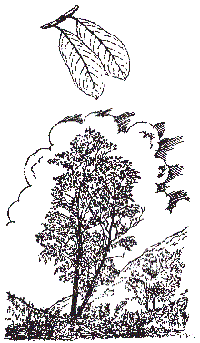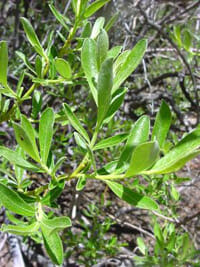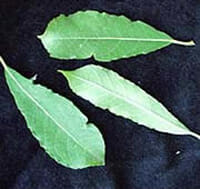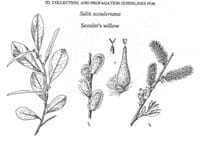Scouler’s Willow – Salicales Saliaceae Salix scoulerana
 |
 |
 |
 |
Identification & Description:
Scoulers Willow is a shrub or small tree growing to 35 feet in height. Although a wetland plant growing along stream banks and wet meadows, Scoulers Willow tolerates the driest conditions of all the willows in the northwest. Found growing anywhere from the flood plains to clear cuts, Scoulers Willow is a shade intolerant species hat grows almost anywhere. The rounded leaves are velvet-like and often have a rust colored appearance underneath.
Physical Characteristics
A decidious tree growing to 10m at a fast rate. It is hardy to zone 6 and is not frost tender. It is in flower in April, and the seeds ripen in May. The flowers are dioecious (individual flowers are either male or female, but only one sex is to be found on any one plant so both male and female plants must be grown if seed is required) and are pollinated by Bees. The plant not is self-fertile. We rate it 1 out of 5 for usefulness.
The plant prefers light (sandy), medium (loamy) and heavy (clay) soils and can grow in heavy clay soil. The plant prefers acid and neutral soils. It cannot grow in the shade. It requires moist or wet soil.
Other Uses
Basketry; Fibre; String; Wood.
The stems are very flexible and are used in basket making. They have also been used to sew the bark on canoes and make hoops. The plant is usually coppiced annually when grown for basket making, though it is possible to coppice it every two years if thick poles are required as uprights.
The roots have been used to make baskets.
The bark can be twisted into cord and used for making bags and clothes.
The branches and the bark can be twisted into a strong rope.
The bark has been used for sowing birch bark onto basket frames.
Wood – light, soft, close-grained. It has no commercial value, but it is used locally for fuel, charcoal and tool handles.
Cultivation details
Succeeds in most soils, including wet, ill-drained or intermittently flooded soils, but prefers a damp, heavy soil in a sunny position. Rarely thrives on chalk.
A fast-growing tree in its early years, this species is one of the few willows to naturally develop a single trunk.
Although the flowers are produced in catkins early in the year, they are pollinated by bees and other insects rather than by the wind.
Hybridizes freely with other members of this genus.
Plants in this genus are notably susceptible to honey fungus.
Dioecious. Male and female plants must be grown if seed is required.